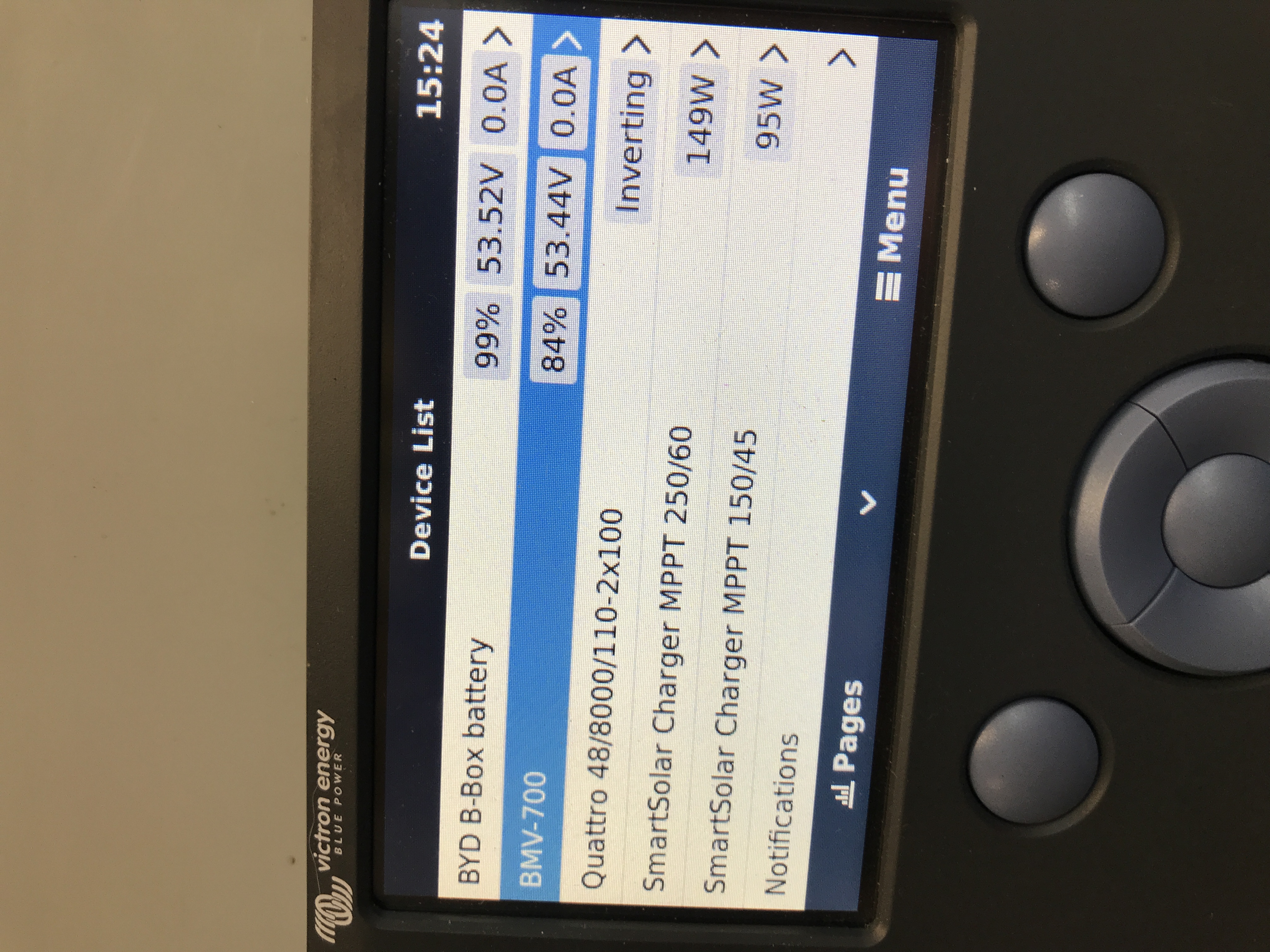Hi
Setting up a Victron 8kva Quattro with 5 byd units
Took note of your work around for the reporting of accurate soc for the unit and have a bmv700 in place
Just wondering what the best settings where for the auto sync to 100% in relation to this set up?
Have only ever used lead acid batterys before and have the auto sync setting mastered.
Also what would you recommend as settings for the auto genny start in relation to voltage and soc?
Also I notice on the mocked up set up I have running at the moment before it is taken to site for full installation the mppt are running in ess mode wanted to check this is normal?
Regards
Mike


